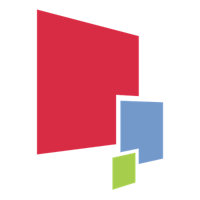Throughout the pandemic, educators, students and families have worked together to figure out how to keep students on track to achievement. Most have found that traditional modes of monitoring progress and improving academic performance do not suffice in this unique crisis. Students have been experiencing challenges with access to instructional content like never before. As such, the current educational climate requires unique considerations for assessing progress.
Traditionally, student assessment is based on the educator’s evaluation of the student’s efforts, but now more than ever, educators understand the importance of taking a more holistic, personalized approach to instruction and assessment—one that encourages relationship-building and helps students own their learning. Here, we explore the assessment practices of three HP Teaching Fellows in the U.S. and Canada to share how they are moving beyond traditional grading methods.
HP Teaching Fellows is part of Reinvent the Classroom, an initiative by Digital Promise, HP, Microsoft and Intel. Sign up to learn more about the Fellowship.
Anna Miller is an eighth grade English and gifted teacher in Helena, Alabama. She provides a clear example of how educators can achieve learning goals while practicing innovative grading methods.
“Grading is something that I’ve struggled with for a long time,” says Miller. “This year, I’ve decided that I’m going to accept late work forever. It’s been really hard to not have a cutoff, but I want them to demonstrate mastery; I’m not as worried about the minutiae of it. ‘Can you do the things that I’m supposed to make sure you can do?’ In English [class], that’s, ‘Can you read and write and communicate?’”
Through this approach, Miller assesses students’ progress in more meaningful ways, coaching them from the perspective of a co-rider on their learning journey. By giving students more time to submit work, Miller shows that she truly cares about students’ mental well-being, as well as their academic success. This also serves as a practical approach to instruction because it gives learners more time to master the work. During this especially unpredictable time in education, it is increasingly important to meet learning goals while being considerate of the unique needs of all learners.
Focusing on a learner’s specific areas of growth is much more effective for educators because it allows them to see where each of their learners needs help. Working with students and encouraging them to take ownership of their learning increases the likelihood of academic achievement. This process is especially rewarding because it allows educators and learners an opportunity to connect to learning on a deeper, more meaningful level, addressing needs or concerns together.
In Regina, Saskatchewan, educator Trevor Hlushko is able to better assess his students' progress by connecting their learning goals to personal interests. Centering students’ interests encourages them to become more invested in the learning process and demonstrate their learning in meaningful ways that can still be effectively tracked.
“I’ve been able to explore [the news] and connect on personal levels with my students. I didn't even come up with [the reflections]; they’re coming up with this. These big ideas that are constantly being put out there have been really cool as far as relevance and making it authentic,” enthuses Hlushko.
For Hlushko, it is especially important to become a co-learner because it allows his students to take ownership of their learning, which ultimately adds even more value to their educational experiences. Such rewarding experiences can be especially helpful in developing or maintaining student engagement during remote or hybrid learning.
Monika Moorman, a fourth grade teacher in Plantation, Florida, uses non-traditional strategies like self-reflection questions to provide an authentic avenue for assessing students’ progress. Her approach connects directly to students’ learning goals and abilities.
“Reflection is key. It doesn’t have to be time-consuming at all, but time needs to be set aside for students to think about their progress and growth. I embed self-reflection questions in most of my assignments: ‘What was the most challenging part of the concept? The lesson? What worked? What didn’t? What could you have done differently in the process?’ I think exit tickets are a great way to achieve the same goal,” Moorman explains.
Providing learners with these reflective rest points allows them to gain understanding of a subject in an authentic way that aligns with their experience. When students are able to engage in learning through a guided personalized experience, they are more likely to be invested in their education and achievement.



